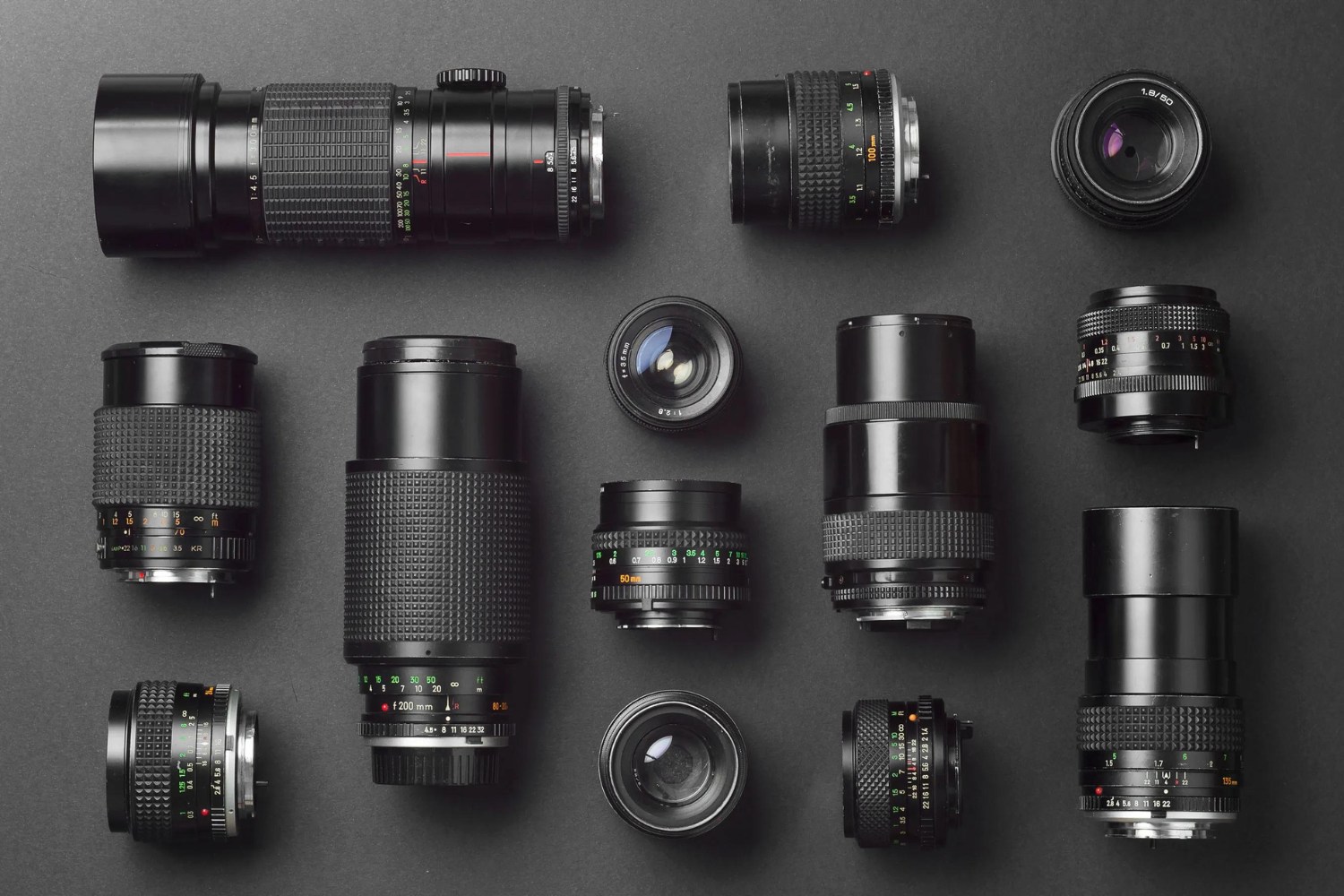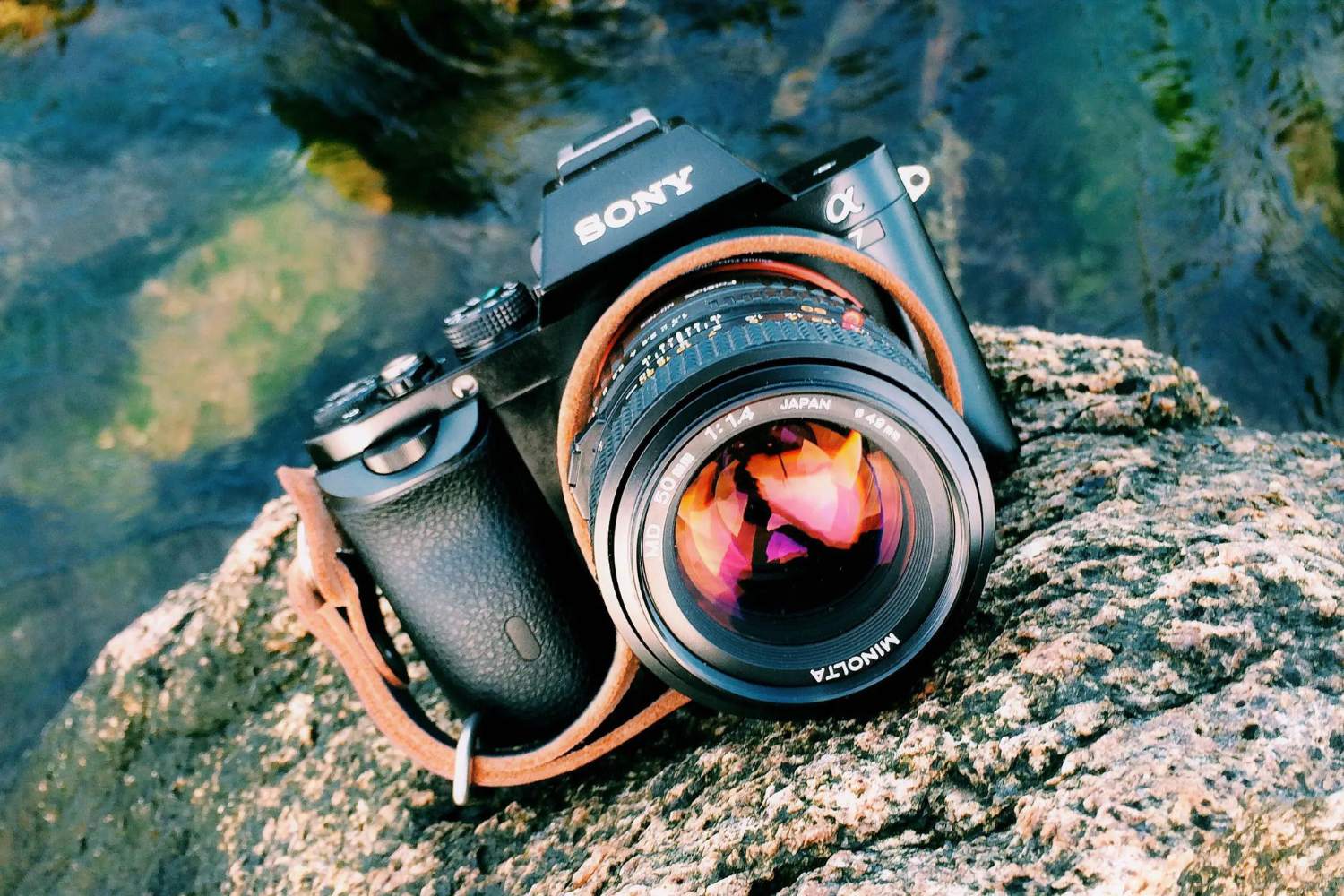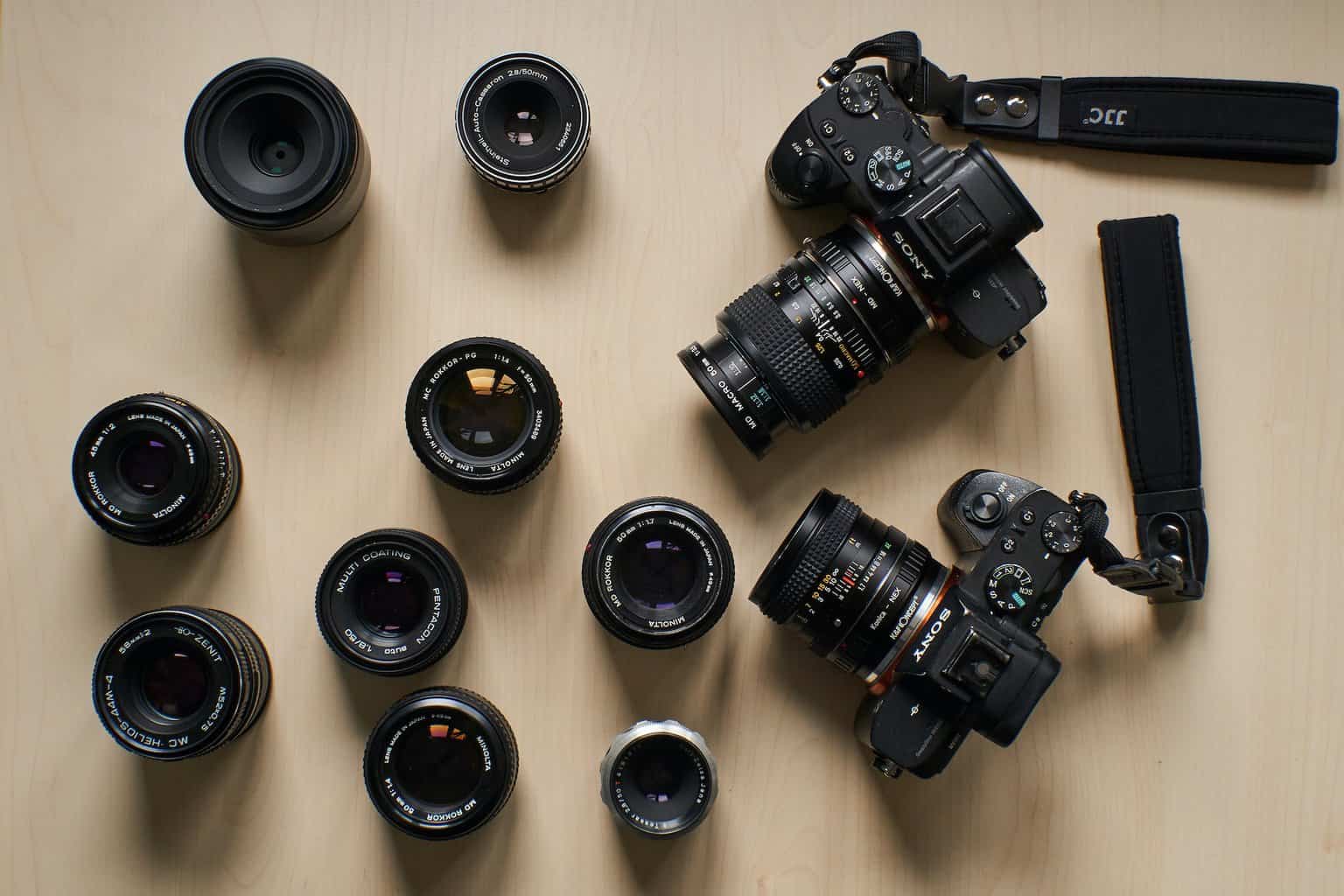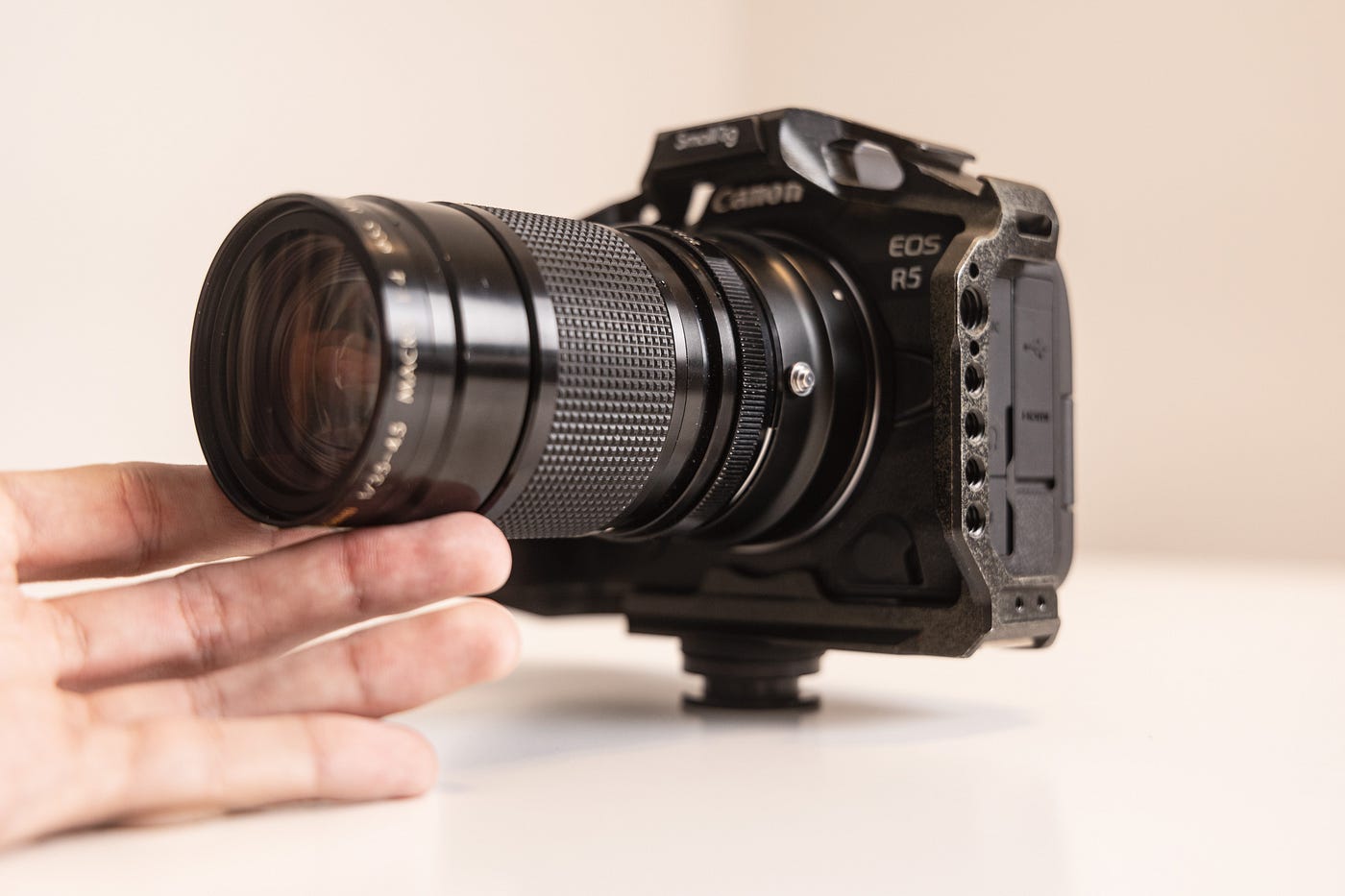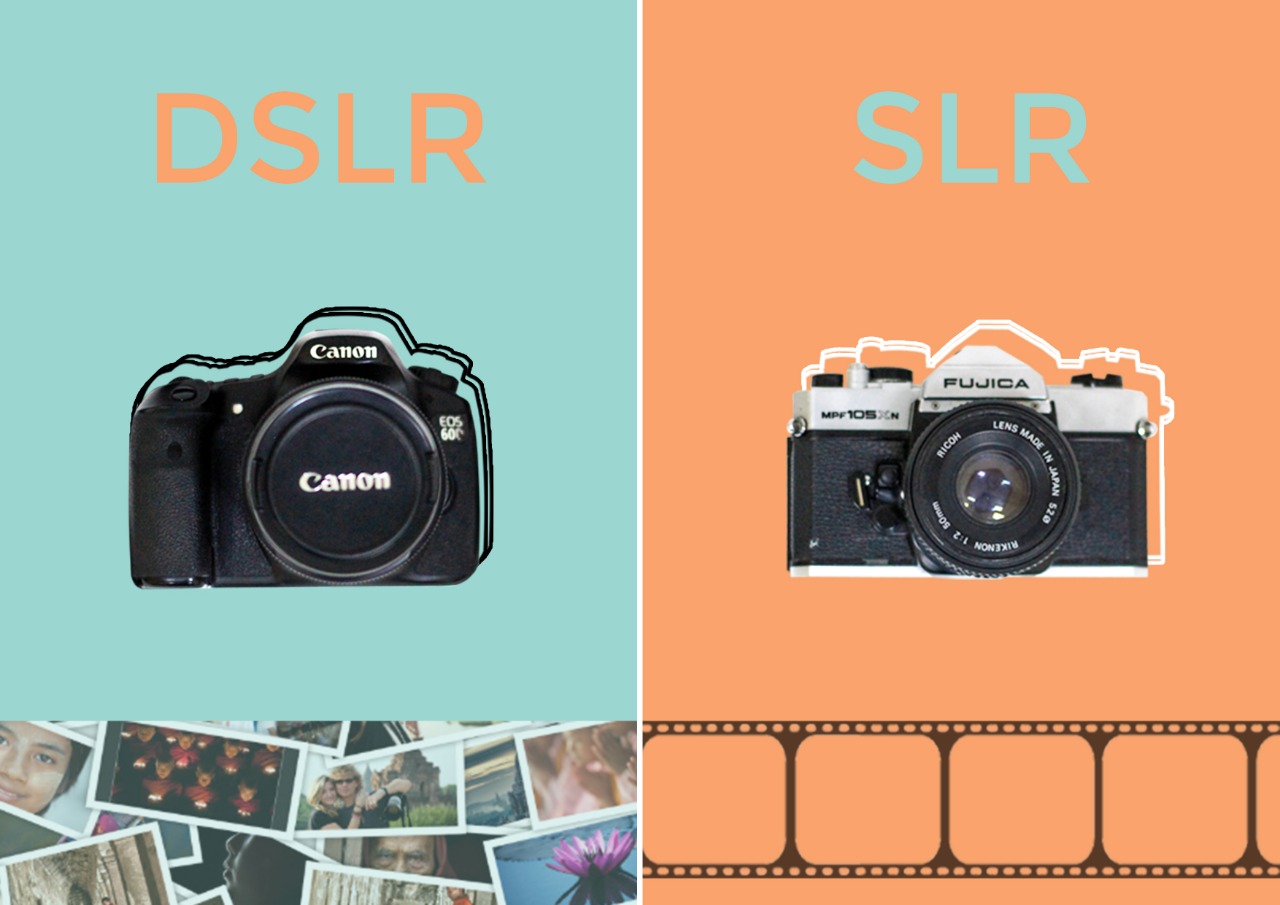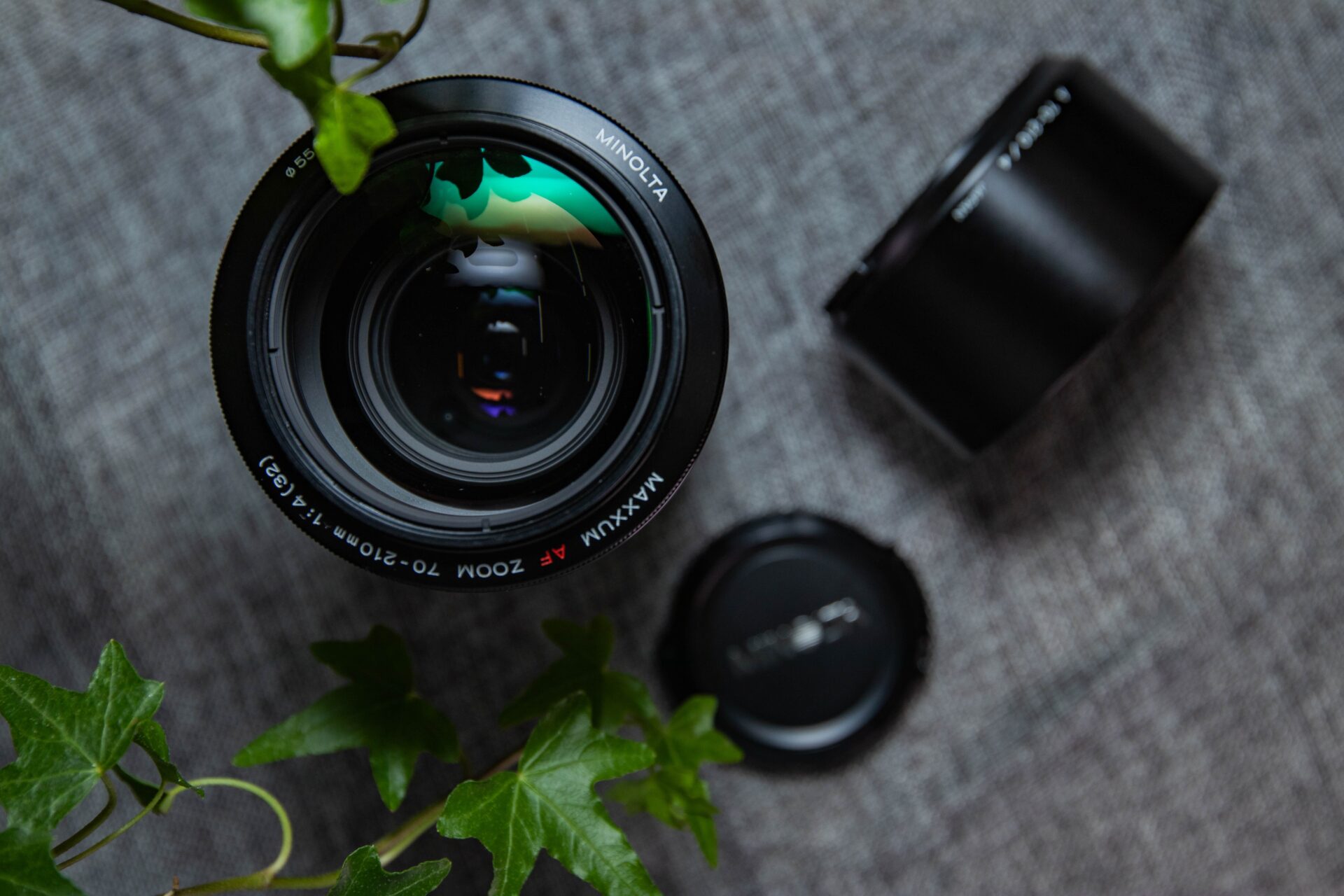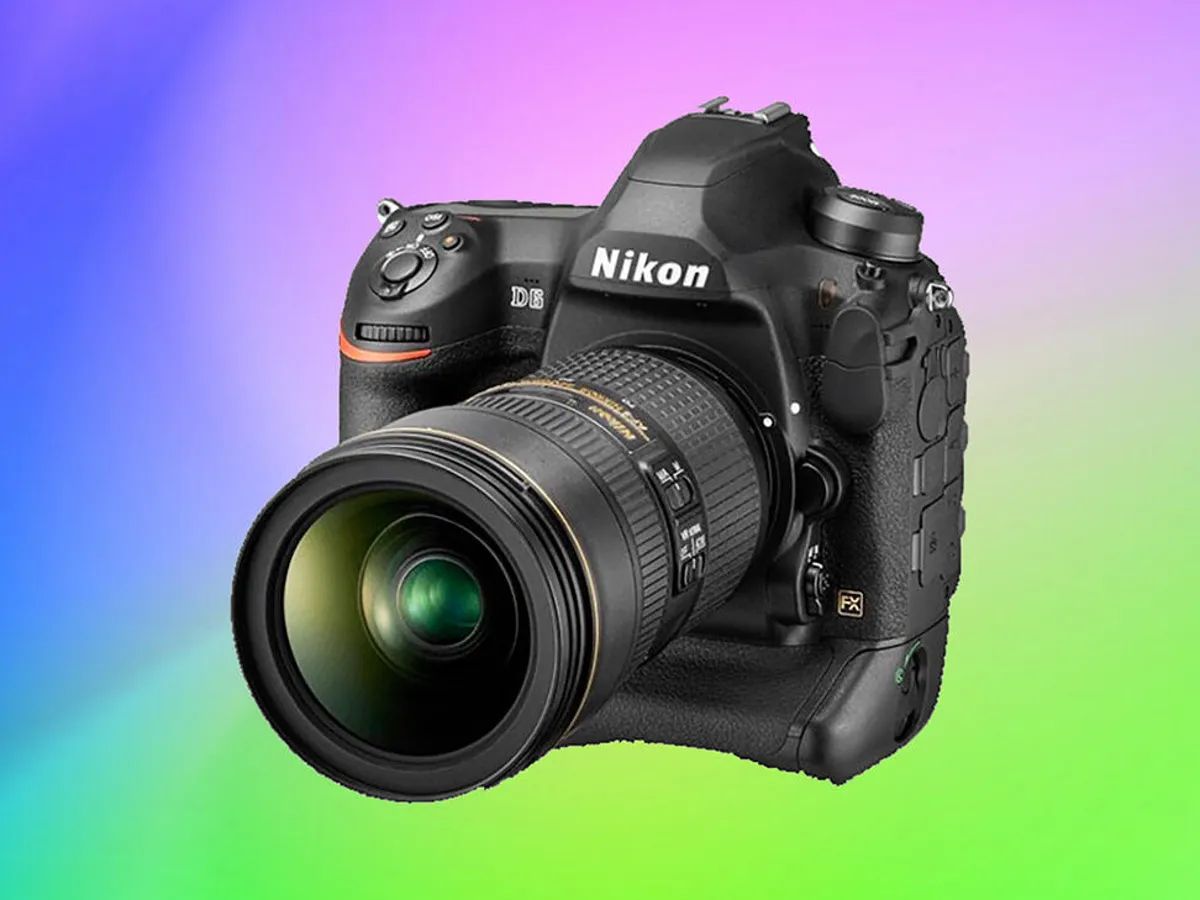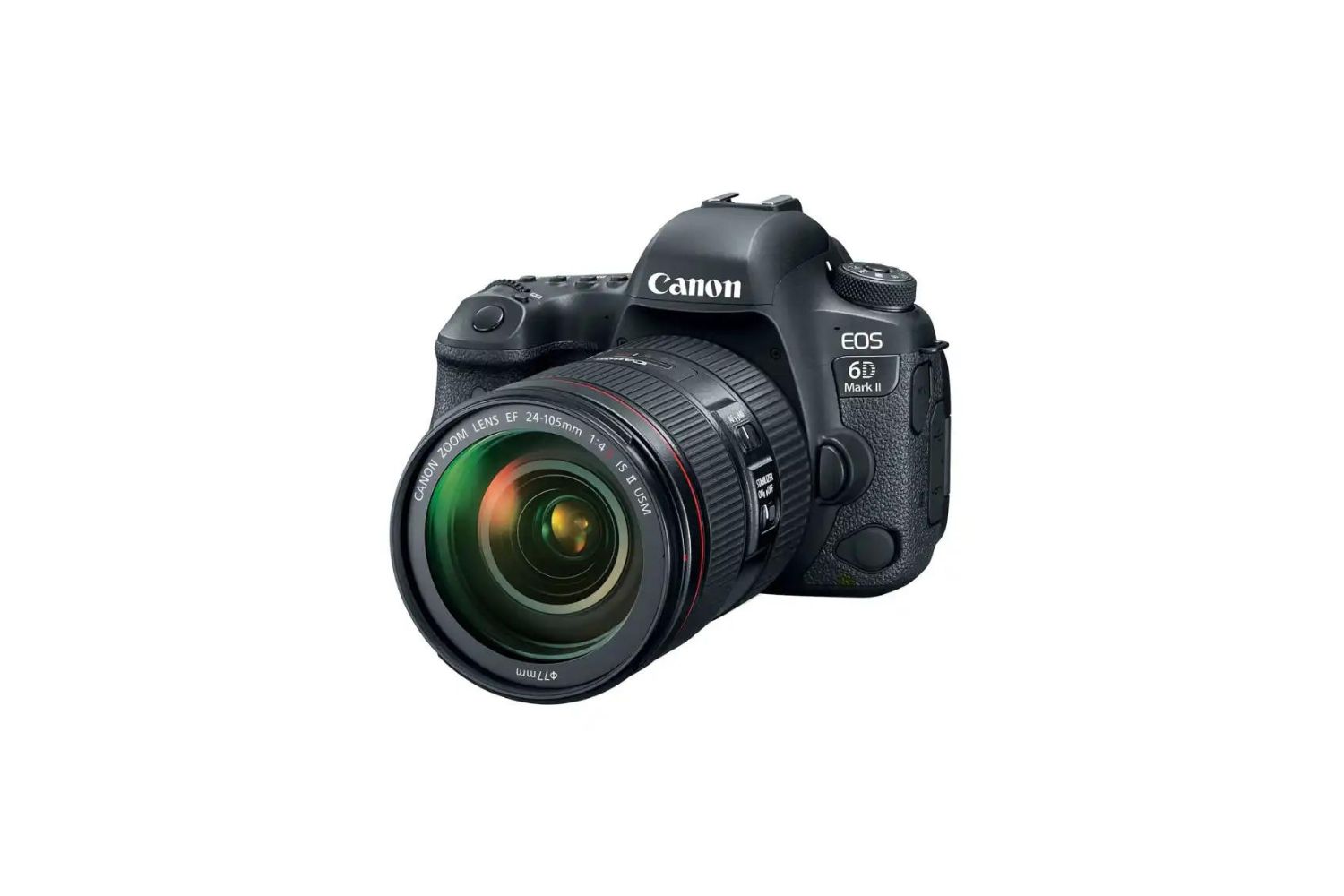Introduction
Introduction
Welcome to the fascinating world of DSLR camera lenses! Whether you’re a professional photographer or an enthusiastic hobbyist, understanding the different types of lenses available for your DSLR camera is crucial for capturing stunning images. Each type of lens offers unique capabilities, allowing you to explore various perspectives, focal lengths, and artistic expressions. From wide-angle vistas to intricate macro details, the right lens can make all the difference in your photography endeavors.
As you delve into the realm of DSLR lenses, you’ll encounter a diverse array of options, each designed to cater to specific shooting scenarios and creative visions. From the compact and versatile prime lenses to the expansive and immersive fisheye lenses, there’s a lens for every photographic aspiration.
Throughout this guide, we’ll embark on a comprehensive journey through the realm of DSLR camera lenses, exploring the distinctive features and applications of prime lenses, zoom lenses, wide-angle lenses, telephoto lenses, macro lenses, and fisheye lenses. By the end of this exploration, you’ll have a deeper understanding of the diverse capabilities and creative opportunities that each type of lens presents.
So, grab your camera, and let’s unravel the enchanting world of DSLR camera lenses, where every click opens up a new realm of visual storytelling and artistic expression.
Prime Lenses
Prime Lenses
Prime lenses are revered for their exceptional image quality and versatility, making them a favorite among photographers who prioritize sharpness and creative control. Unlike zoom lenses, prime lenses have a fixed focal length, meaning they do not offer zoom capabilities. This limitation, however, is overshadowed by their ability to produce stunningly sharp images with minimal distortion, making them ideal for various genres of photography.
One of the primary advantages of prime lenses is their wide aperture capabilities, often ranging from f/1.2 to f/2.8 or even wider. This wide aperture not only allows for superior low-light performance but also enables photographers to achieve beautiful background blur, commonly referred to as “bokeh.” Whether capturing portraits, street scenes, or low-light environments, the ability to isolate the subject with creamy bokeh sets prime lenses apart.
Furthermore, the fixed focal length of prime lenses encourages photographers to be more intentional with their compositions and movements. By physically moving to frame the shot, photographers can refine their creative vision and develop a deeper understanding of perspective and framing. This deliberate approach often leads to more thoughtful and compelling compositions, fostering a deeper connection between the photographer and the subject.
Prime lenses come in various focal lengths, catering to different photographic styles and preferences. From the classic 50mm “nifty fifty” lens, popular for its versatility in capturing everyday scenes, to the portrait-friendly 85mm and the wide-angle 35mm, there’s a prime lens for every photographic narrative.
Whether you’re a portrait enthusiast, a street photography aficionado, or a lover of low-light adventures, prime lenses offer unparalleled image quality, artistic control, and a compelling shooting experience. Their ability to deliver razor-sharp images, coupled with the artistic allure of wide apertures, makes them an indispensable tool in the arsenal of any discerning photographer.
Zoom Lenses
Zoom Lenses
Zoom lenses are prized for their versatility and convenience, offering photographers the flexibility to adjust focal lengths without changing lenses. This adaptability makes them indispensable for capturing a wide range of subjects and compositions, making them a popular choice for photographers who require flexibility without compromising image quality.
One of the key advantages of zoom lenses is their ability to cover a range of focal lengths within a single lens, such as 24-70mm or 70-200mm. This versatility allows photographers to seamlessly transition from wide-angle vistas to intimate close-ups without the need to switch lenses, making them well-suited for dynamic shooting environments where moments unfold rapidly.
Zoom lenses also provide convenience and efficiency, particularly in situations where changing lenses may not be practical or feasible. Whether documenting events, exploring landscapes, or capturing candid moments, the ability to swiftly adjust focal lengths empowers photographers to adapt to evolving scenes with ease, ensuring that no shot is missed.
While prime lenses are celebrated for their wide apertures, modern zoom lenses have made significant strides in offering impressive aperture ranges, such as f/2.8 throughout the zoom range. This advancement not only enhances low-light performance but also enables photographers to achieve compelling background blur, adding a touch of artistry to their compositions.
Furthermore, the optical quality of zoom lenses has seen remarkable advancements, with many high-end zoom lenses rivaling the sharpness and clarity traditionally associated with prime lenses. This enhancement in optical technology ensures that photographers can capture intricate details and vibrant colors across the entire zoom range, providing a seamless and immersive shooting experience.
Whether you’re embarking on a photographic expedition or documenting the nuances of everyday life, zoom lenses offer unparalleled adaptability, optical prowess, and convenience. Their ability to effortlessly transition between focal lengths, coupled with impressive optical performance, makes them an indispensable companion for photographers seeking versatility without compromising image quality.
Wide Angle Lenses
Wide angle lenses are revered for their expansive field of view, making them indispensable for capturing sweeping landscapes, architectural marvels, and immersive environmental portraits. With focal lengths typically ranging from 14mm to 35mm, these lenses offer a unique perspective that accentuates spatial relationships and conveys a sense of grandeur in the captured scenes.
One of the primary advantages of wide angle lenses is their ability to encompass vast scenes within a single frame, allowing photographers to convey the magnitude and depth of the subject matter. Whether it’s a majestic mountain range, a bustling cityscape, or a dramatic coastline, wide angle lenses excel in capturing the grandeur and expanse of the environment, inviting viewers to immerse themselves in the visual narrative.
Besides their prowess in landscape photography, wide angle lenses are also favored for architectural and interior photography, where the expansive field of view enables photographers to emphasize spatial relationships and intricate details. From capturing the soaring lines of a skyscraper to the symmetrical elegance of a grand hall, wide angle lenses empower photographers to craft visually compelling compositions that showcase the scale and design of architectural marvels.
Furthermore, wide angle lenses excel in environmental portraiture, allowing photographers to incorporate the surroundings into the frame, thereby contextualizing the subject within their environment. This approach not only adds depth and storytelling elements to portraits but also provides a captivating visual narrative that transcends traditional portrait compositions.
While wide angle lenses are renowned for their ability to capture vast scenes, they also offer unique creative opportunities for emphasizing foreground elements and creating dynamic perspectives. By positioning close to a prominent foreground element and allowing it to dominate the frame, photographers can create visually striking compositions that draw viewers into the scene, adding a sense of depth and visual intrigue.
Whether you’re capturing the majesty of natural landscapes, the allure of urban architecture, or the intimate connection between subjects and their surroundings, wide angle lenses offer unparalleled capabilities for conveying grandeur, spatial relationships, and immersive storytelling. Their expansive field of view and creative potential make them an invaluable tool for photographers seeking to evoke a sense of awe and wonder in their imagery.
Telephoto Lenses
Telephoto lenses are revered for their ability to bring distant subjects closer, making them indispensable for capturing wildlife, sports, and candid moments that require a significant reach. With focal lengths typically exceeding 70mm and extending to 600mm or more, these lenses offer a powerful magnification that enables photographers to isolate and emphasize distant details with remarkable clarity and precision.
One of the primary advantages of telephoto lenses is their ability to compress the perceived distance between subjects, thereby accentuating the visual impact of distant scenes. Whether it’s a majestic wildlife encounter, a thrilling sports moment, or an intimate candid gesture, telephoto lenses excel in capturing compelling visuals that might otherwise be inaccessible to the naked eye.
Telephoto lenses also offer exceptional subject isolation, allowing photographers to create captivating compositions with beautifully blurred backgrounds that accentuate the main subject. This shallow depth of field, coupled with the magnified perspective, adds a sense of visual drama and intimacy to the captured scenes, making telephoto lenses a favored choice for portrait and wildlife photographers seeking to convey emotion and impact in their imagery.
Furthermore, the optical prowess of telephoto lenses enables photographers to capture intricate details and subtle nuances in distant subjects, from the graceful feathers of a bird in flight to the intense determination in an athlete’s expression. This level of detail and clarity empowers photographers to document fleeting moments and elusive subjects with unparalleled precision, ensuring that every frame tells a compelling story.
While telephoto lenses are often associated with distant subjects, they also offer unique creative opportunities for capturing compressed perspectives and abstracting scenes. By utilizing the magnified reach of telephoto lenses, photographers can emphasize patterns, textures, and juxtapositions within distant landscapes, adding a layer of visual intrigue and artistic expression to their imagery.
Whether you’re immersing yourself in the captivating world of wildlife photography, documenting the exhilarating energy of sports, or seeking to convey emotion and impact in portrait compositions, telephoto lenses offer unparalleled reach, subject isolation, and optical precision. Their ability to bring distant scenes closer and capture intricate details makes them an indispensable tool for photographers seeking to amplify the visual impact and storytelling potential of their images.
Macro Lenses
Macro lenses are revered for their exceptional close-up capabilities, allowing photographers to explore the intricate details of subjects with unparalleled magnification and clarity. With a primary focus on capturing the minute details of subjects such as flowers, insects, and textures, macro lenses offer a captivating glimpse into a world that is often unseen by the naked eye.
One of the primary advantages of macro lenses is their ability to achieve 1:1 magnification, enabling photographers to capture subjects at life-size proportions. This remarkable level of magnification opens up a realm of visual exploration, revealing the delicate intricacies and textures that define the essence of the subject, whether it’s the delicate veins of a leaf or the intricate patterns on an insect’s wings.
Macro lenses also excel in creating compelling compositions that emphasize the intricate details and textures of subjects, offering a captivating visual narrative that transcends traditional perspectives. By immersing viewers in the mesmerizing world of close-up photography, macro lenses invite them to appreciate the beauty and complexity of subjects that are often overlooked in the grand scheme of the natural world.
Furthermore, the shallow depth of field inherent in macro photography allows photographers to isolate specific details of the subject, creating visually striking compositions that draw the viewer’s attention to the focal point while artfully blurring the surrounding elements. This selective focus adds a sense of artistry and intimacy to the captured images, evoking a profound connection with the subject matter.
While macro lenses are synonymous with capturing the minute details of natural subjects, they also offer creative opportunities for exploring abstract compositions and unconventional perspectives. By utilizing the exceptional close-up capabilities of macro lenses, photographers can transform everyday objects into visually compelling abstract imagery, unveiling hidden patterns, textures, and symmetries that redefine the ordinary.
Whether you’re delving into the enchanting realm of floral photography, documenting the captivating world of insects, or exploring the mesmerizing textures of everyday objects, macro lenses offer unparalleled magnification, detail, and artistic expression. Their ability to reveal the hidden intricacies of subjects and create visually captivating compositions makes them an indispensable tool for photographers seeking to uncover the beauty and complexity of the world at a microscopic scale.
Fisheye Lenses
Fisheye lenses are renowned for their distinctive visual characteristics, offering an expansive field of view that captures a hemispherical perspective, resulting in visually striking and creatively immersive imagery. With their exaggerated curvilinear distortion and dramatic visual impact, fisheye lenses empower photographers to explore unconventional perspectives and unleash their creativity in unique and captivating ways.
One of the primary advantages of fisheye lenses is their ability to capture an exceptionally wide field of view, often exceeding 180 degrees. This expansive coverage allows photographers to encapsulate vast scenes and environments with a surreal and immersive perspective, creating imagery that transcends traditional visual boundaries and invites viewers to experience a heightened sense of spatial immersion.
Fisheye lenses are celebrated for their ability to introduce dynamic and unconventional compositions, allowing photographers to experiment with distortion and perspective to create visually compelling and artistically expressive imagery. Whether it’s capturing architectural marvels with a surreal twist, or infusing a sense of whimsy and creativity into everyday scenes, fisheye lenses offer a boundless canvas for photographers to unleash their imaginative vision.
Furthermore, fisheye lenses excel in capturing immersive and engaging environmental portraits, where the exaggerated perspective adds a sense of dynamism and depth to the composition. By incorporating the surroundings into the frame with a captivating curvature, fisheye lenses invite viewers to experience the scene from a uniquely immersive vantage point, fostering a sense of visual intrigue and storytelling.
While fisheye lenses are often associated with their distinct visual distortion, they also offer creative opportunities for abstract and experimental photography. By embracing the unconventional characteristics of fisheye lenses, photographers can transform ordinary scenes into visually captivating abstractions, unveiling a world of creative potential that transcends traditional perspectives.
Whether you’re embarking on a visual odyssey through surreal landscapes, infusing a sense of whimsy and creativity into architectural compositions, or seeking to experiment with unconventional perspectives and visual distortion, fisheye lenses offer unparalleled creative freedom, immersive perspectives, and artistic expression. Their ability to transcend traditional visual boundaries and unleash the photographer’s creativity makes them an indispensable tool for photographers seeking to redefine perspectives and capture the world in a visually captivating and artistically immersive manner.
Conclusion
As we conclude our exploration of the diverse world of DSLR camera lenses, we have embarked on a captivating journey through the unique capabilities and creative possibilities offered by prime lenses, zoom lenses, wide-angle lenses, telephoto lenses, macro lenses, and fisheye lenses. Each category of lens presents photographers with a distinct set of advantages and creative opportunities, empowering them to capture compelling imagery across a wide spectrum of genres and visual narratives.
From the exceptional image quality and artistic control offered by prime lenses to the versatility and adaptability of zoom lenses, photographers are equipped with a diverse array of tools to bring their creative visions to life. The expansive field of view and immersive storytelling potential of wide-angle lenses, the powerful reach and subject isolation capabilities of telephoto lenses, and the intricate magnification and artistic expression of macro lenses offer photographers an unparalleled range of creative possibilities.
Furthermore, the visually striking distortion and immersive perspectives afforded by fisheye lenses invite photographers to explore unconventional visual narratives and unleash their creativity in ways that transcend traditional perspectives. Each category of lens enriches the photographic experience, offering a unique set of capabilities that cater to diverse shooting scenarios and artistic aspirations.
Whether you’re capturing the grandeur of natural landscapes, the intimacy of portraiture, the exhilaration of sports and wildlife, or the intricate details of the microcosmos, DSLR camera lenses serve as indispensable tools for photographers seeking to convey their unique perspectives and narratives through imagery. Their ability to evoke emotion, convey storytelling elements, and capture the essence of the subject matter elevates photography to a form of visual poetry, where every frame becomes a compelling story waiting to unfold.
As you continue your photographic journey, may the diverse capabilities and creative potential of DSLR camera lenses inspire you to explore new perspectives, capture captivating moments, and weave visual narratives that resonate with depth and emotion. Embrace the unique characteristics of each lens, experiment with unconventional perspectives, and unleash your creativity to craft imagery that transcends visual boundaries and speaks to the heart of the viewer.







